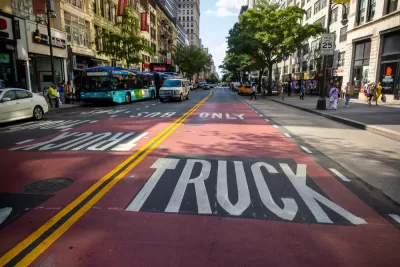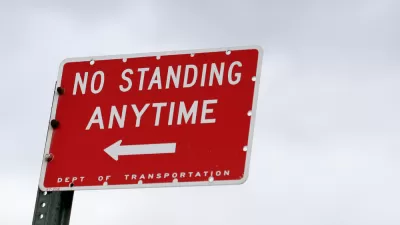Predictions of carmageddon have not come to pass after New York City blocked most car traffic of a section of 14th Street in Manhattan to make way for buses.

The initial reviews of the new bus priority on 14th Street in Manhattan were positive, but there was a sense that many writers in New York were waiting until the dust settled on an controversial and innovative new street configuration that made its debut on October 3, 2019.
An article written by Gina Bellafante for the New York Times and published over the weekend takes a more definitive stance: 14th Street is a huge success that should be duplicated elsewhere in the city.
Recently, I wandered around the vicinity of 14th Street and encountered a quiet that was almost eerie. I was unnervingly reminded of the days after 9/11, when cars were prohibited from making their way downtown. No one going to Cafe Cluny (on the corner of West 12th and West Fourth Streets) would have heard a single honking horn.
The relative silence was the result of the city’s recent decision to ban most cars from 14th Street. As transportation analysts had predicted all along, traffic doesn’t necessarily reroute itself when cars are pulled off certain roads. It almost starts to disappear.
The project is notable because it was delayed by lawsuits that predicted just the opposite scenario on streets in the vicinity of 14th Street would come true.
Bellafante also notes that side streets aren't the only beneficiary of the new arrangement. 14th Street itself is also transformed:
Initial data indicate that the buses, previously some of the slowest in the city but now, free of so much competition, have become much faster. An M14 bus trip that typically took 30 minutes now is taking about 21 minutes. One morning this week, a bus was so ahead of schedule that it had to stop at an intersection and pass the time so it wouldn’t get too ahead of itself.
Bellafante is also willing to test the waters on the idea of expanding the pilot project to more streets. "Imagine 42nd Street without traffic," for instance.
FULL STORY: Cars Were Banned on 14th Street. The Apocalypse Did Not Come.

Alabama: Trump Terminates Settlements for Black Communities Harmed By Raw Sewage
Trump deemed the landmark civil rights agreement “illegal DEI and environmental justice policy.”

Planetizen Federal Action Tracker
A weekly monitor of how Trump’s orders and actions are impacting planners and planning in America.

Why Should We Subsidize Public Transportation?
Many public transit agencies face financial stress due to rising costs, declining fare revenue, and declining subsidies. Transit advocates must provide a strong business case for increasing public transit funding.

Understanding Road Diets
An explainer from Momentum highlights the advantages of reducing vehicle lanes in favor of more bike, transit, and pedestrian infrastructure.

New California Law Regulates Warehouse Pollution
A new law tightens building and emissions regulations for large distribution warehouses to mitigate air pollution and traffic in surrounding communities.

Phoenix Announces Opening Date for Light Rail Extension
The South Central extension will connect South Phoenix to downtown and other major hubs starting on June 7.
Urban Design for Planners 1: Software Tools
This six-course series explores essential urban design concepts using open source software and equips planners with the tools they need to participate fully in the urban design process.
Planning for Universal Design
Learn the tools for implementing Universal Design in planning regulations.
Caltrans
Smith Gee Studio
Institute for Housing and Urban Development Studies (IHS)
City of Grandview
Harvard GSD Executive Education
Toledo-Lucas County Plan Commissions
Salt Lake City
NYU Wagner Graduate School of Public Service





























